
© Dave Morgan, by kind permission of the Royal Opera House. (Click image for larger version)
The Royal Ballet
Apollo, 24 Preludes, Aeternum
London, Royal Opera House
22 February 2013
Gallery of 27 pictures by Dave Morgan
www.roh.org.uk
This triple bill, with two world premieres, shows how ably choreographers 85 years apart can refresh the language of classical ballet without distorting it beyond recognition. George Balanchine’s 1928 Apollo remains startlingly modern; Alexei Ratmansky and Christopher Wheeldon continue to develop their own idiomatic use of ballet technique in works tailor-made for Royal Ballet dancers.
The programme spans the cycle of life, opening with Apollo, a springtime-of-the-world creation, and concluding with Wheeldon’s requiem lament, Aeternum. In between comes Ratmansky’s 24 Preludes, celebrating the artistic maturity of its four principal couples.

© Johan Persson, courtesy the Royal Opera House. (Click image for larger version)
Carlos Acosta’s Apollo is manifestly a hybrid being, the son of a non-divine nymph, Leto, and the ruler of the gods. Because the Royal Ballet performs the complete version (unlike New York City Ballet or English National Ballet), one can see how Leto’s thrashing about in childbirth is echoed by her son’s flailing arm as he first attempts to play his lute. Apollo has to discover how to discipline himself and his assistant Muses before he can meet Zeus’s summons to ascend to godhood. Acosta revels in the strangeness of Apollo’s steps, while making it clear he has divine DNA within him. He has two well-matched lanky Muses in Olivia Cowley and Itziar Mendizabal, with Marianela Nuñez as his very feminine mentor, Terpsichore. Touchingly, she has complete faith in his prowess, trusting him to cope with the demands she makes of him. The ending, mounting to Olympus, enables Leto to witness her son being accepted into the pantheon of the gods.

© Johan Persson, courtesy the Royal Opera House. (Click image for larger version)
For his first Royal Ballet commission, Ratmansky has used Chopin’s 24 Preludes for a set of divertissements displaying the particular qualities of the eight dancers he chose for his first cast (with a second cast to come). He’s already done something similar with chamber ballets for NYCB, American Ballet Theatre and the State Ballet of Georgia. It’s his way of getting know a company, rather than imposing a preconceived project. 24 Preludes is a lot like a Jerome Robbins ensemble ballet – Dances at a Gathering or In the Night – with hints of stories about relationships within a group of friends.

© Dave Morgan, by kind permission of the Royal Opera House. (Click image for larger version)
It takes place against an aqueous backdrop, lit by Neil Austin to reflect changing moods and times of day. The four women wear dresses of irridescent fabric in shades of purple and grey lilac, the men in matching tops and grey tights. Leanne Benjamin and Alina Cojocaru are quicksilver sprites, darting at speed; Zenaida Yanowsky is majestic, Sarah Lamb wistfully elegant. Edward Watson has a Hamlet role, brooding and conflicted – but he can lighten up, as he does when two flirtatious small women both end up in his arms as they exit. Steven McRae becomes the jester, with a virtuoso solo that could have been made for Baryshnikov in his heyday. Rupert Pennefather, heroic, is put on his mettle by Zanowsky in an angry duet strongly reminiscent of the In the Night disputatious couple. Valeri Hristov remains a shadowy figure, serving to partner Benjamin.

© Dave Morgan, by kind permission of the Royal Opera House. (Click image for larger version)
Sooner or later, everyone has the chance to shine in a solo as well as taking part in pas de deux, trios and quartets. Chopin’s preludes in 12 major and 12 minor keys vary in length: some very brief, others long enough for complex double duets to result in dizzying exchanges of partners. Orchestrated by Jean Françaix, the piano preludes rarely sound familiar. Their instrumental colouring determines the emotional content of the many encounters, from stormy to playful. They are never predictable, though after 40 minutes, Ratmansky risks running out of permutations.
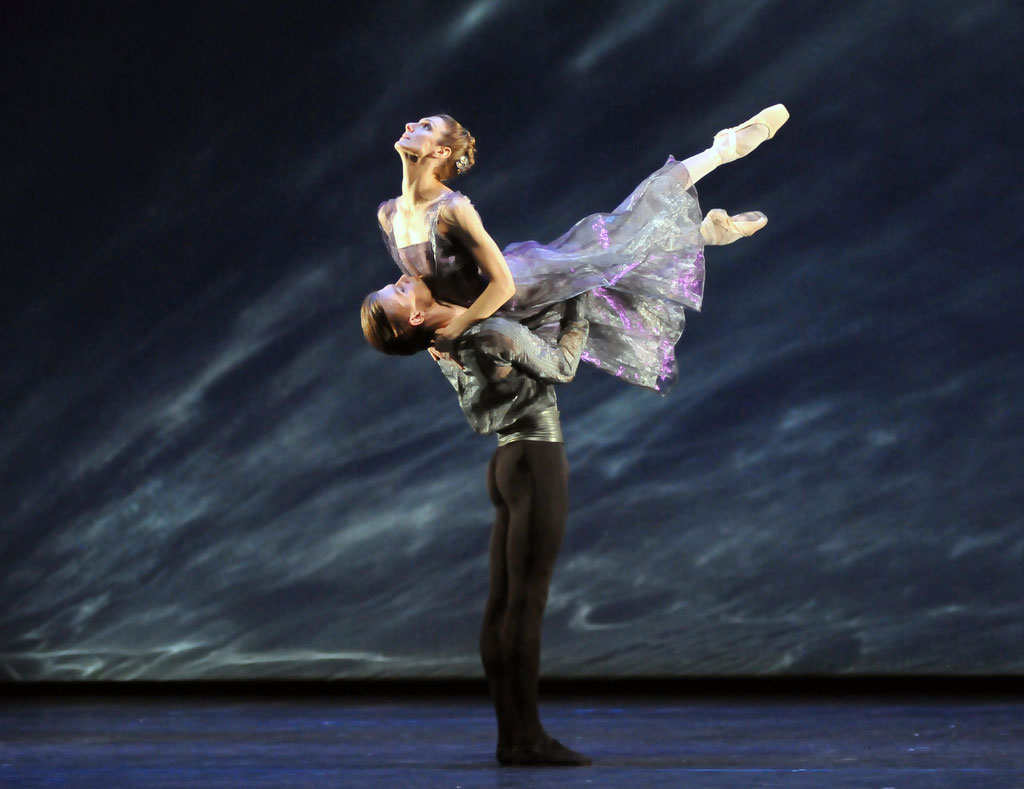
© Dave Morgan, by kind permission of the Royal Opera House. (Click image for larger version)
After an initial viewing, I have two reservations. One is that the decorous costumes, designed by Colleen Atwoood, make the choreography look more conventional than it is. Because the women’s legs are masked by unyielding skirts, their intricate steps are muffled. And when Yanowsky takes her share of partnering McRae in a trio with Pennefather, her dress gets in the way. My second reservation is that Ratmansky hasn’t revealed anything new about these particular dancers. He shows them off in what we know they do well. Maybe the second cast will expose just how challenging his choreography is for other bodies, other personalities.
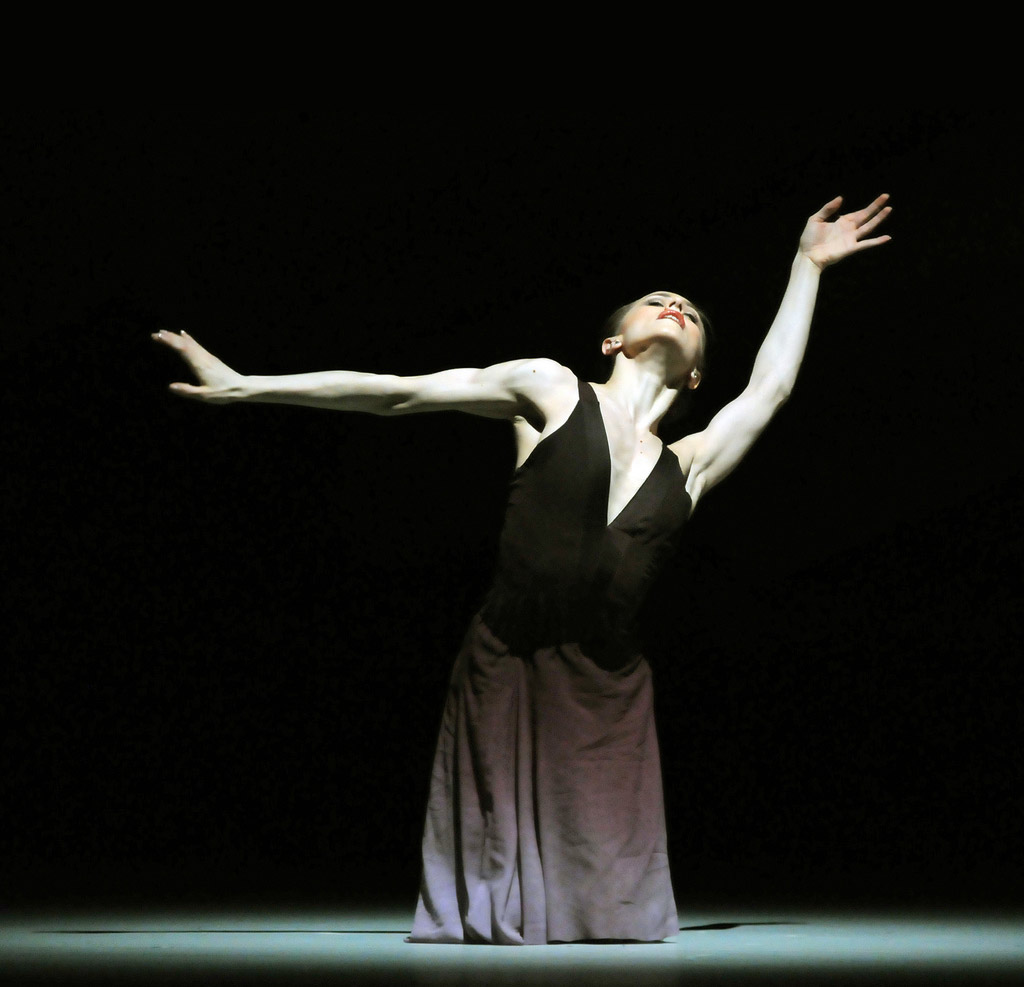
© Dave Morgan, by kind permission of the Royal Opera House. (Click image for larger version)
Wheeldon has honoured the centenary of Benjamin Britten’s birth by choosing his Sinfonia da Requiem for Aeternum, half the length of 24 Preludes. Inevitably, there are similarities with Kenneth MacMillan’s Requiem to Fauré, as well as Gloria to Poulenc’s setting of the Mass for the dead. Britten’s Sinfonia da Requiem, writen during World War II, is in three linked sections: Lacrymosa, Dies Irae and Requiem Aeternum, moving from fear and lamentation to a plea for lasting peace. Jean-Marc Puissant’s sculptural set for Aeternum suggests a shattered landscape that lifts away for a vision of the hereafter.

© Dave Morgan, by kind permission of the Royal Opera House. (Click image for larger version)
Marianela Nuñez is the central figure, a devastated woman who becomes an angel of death. She is joined after a thunderclap start by a corps of eight mourners, knotted together in grief. Nehemiah Kish supports Nuñez, the lonely outsider. As the slow Lacrymosa march builds to a crescendo, the set’s dense frieze of wooden fragments expands above the swirling bodies below. The Dies Irae is a dance of death, led by James Hay as a fiendish spirit of misrule among six agitated newcomers. He confronts Nuñez, who wields her leg like a lethal weapon.

© Dave Morgan, by kind permission of the Royal Opera House. (Click image for larger version)
As the Requiem Aeternum movement starts, she is once again discovered alone, this time in a grey leotard instead of a long dress. She appears a wraith (though not a frail one, since her skimpy costume exposes every sinew) – or rather, a silver moth emerging from a chrysalis. She unfolds her limbs like wings, clinging to Federico Bonnelli as her consoling escort. The lifts Wheeldon has devised for this pas de deux are, as ever, extraordinary. Nuñez’s malleability is agonised and daring, defying gravity as Britten’s final melody holds out hope of redemption. On the last note of the clarinet, she and Bonnelli walk away together, silhouetted in the glow of Adam Silverman’s otherworldly lighting.
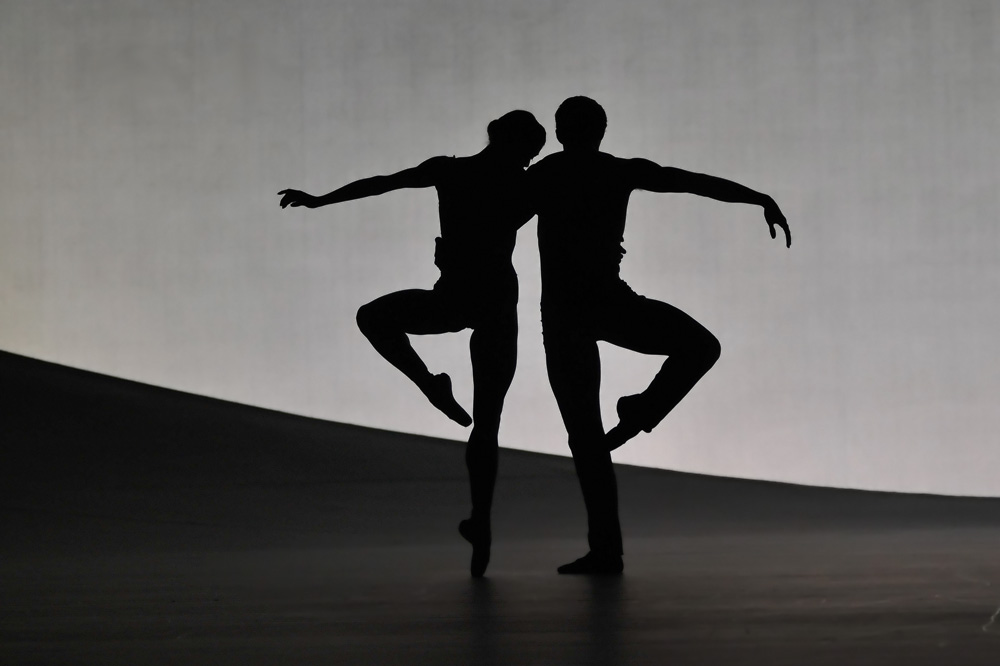
© Dave Morgan, by kind permission of the Royal Opera House. (Click image for larger version)
Wheeldon wisely avoids religious imagery and overt anti-war propaganda in this striking piece. It is essentially a one-woman ballet, with the corps of 14 remaining an anonymous chorus. The two leading men are merely stalwart partners; only Hay features as a soloist. Though Puissant’s set is both apt and magnificent, his costumes are deplorable.













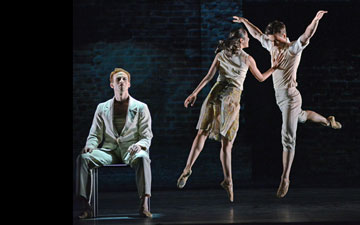


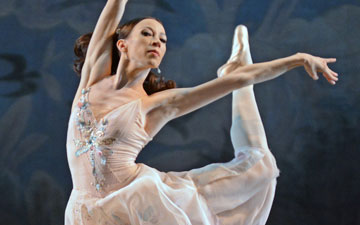
You must be logged in to post a comment.